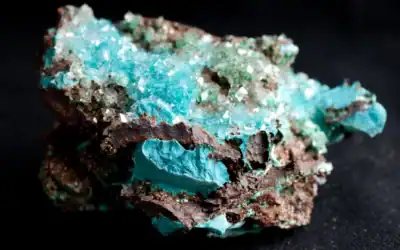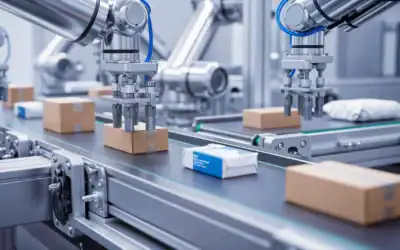Optimising Energy Efficiency in Air Purifiers: Engineering and Procurement Strategies
The design and production of air-purifier devices have come to rely heavily on energy efficiency. As worldwide energy conservation goals have been set, and with a push from the marketplace to lower operational costs, the air-purifier industry has had to recalibrate its performance versus efficiency equation. Its new challenge: to consume as little electricity as possible while still delivering the high-quality air the purifiers’ buyers expect.
This article investigates the effect of energy consumption on air purifier design and procurement choices, proffering key strategies for designing models that are super-efficient and meet regulatory and market demands.
Eco-Conscious Consumer Priorities for Air Purifiers
The increasing cost of electricity in recent years has changed how consumers make purchasing decisions. Excluding the cost factor, in 2024, Business Dasher reported that 55% of consumers consciously look for products that are energy-efficient to help minimise their carbon footprint. This tendency is not just about saving money but reflects a bigger urge to be environmentally responsible when it comes to investing in electronic products.
In other words, with air purifier companies, this means that consumers consider not just the upfront price but also their continuing operating cost. A model perceived as an “energy hog” runs the risk of rejection, no matter how advanced their filtration capabilities. With the market for air purifiers expected to grow to 29.65 billion by 2033, energy efficiency is one critical feature to have in capturing eco-conscious buyers and helping a company differentiate itself from its competitors.
Understanding Air Purifier Energy Consumption
The power consumption of air purifiers can be quite different, depending on the technology used and how the device is set to operate. They can draw anywhere from 20 watts (W) to over 200 W. For instance:
– Simple HEPA air purifiers: 30W – 80W
– Models with HEPA + Carbon filtration: 80W – 150W
– Industrial or large-space air purifiers: 150W – 250W+
In contrast to high-energy appliances (such as refrigerators that use 100-800W or air conditioners that use over 1,200W), air purifiers are relatively low-energy devices. Still, for products that run without interruption, it is vital to optimize energy consumption for not only regulatory compliance but also the realization of promised cost savings for consumers.
Key Design Strategies for Energy-Efficient Air Purifiers
- Motor Choice: BLDC vs. AC Motors
– AC motors are widely used and functional but draw a lot of power since they operate at a constant speed.
– Brushless DC (BLDC) motors are more efficient, offering about 40% better energy use, and have longer lifespans. They also allow for more variability in speed.
– So, for the 40% increase in energy efficiency and the allowance for quiet operation, go with the BLDC motor whenever possible.
- Enhancing Fan Speed and Airflow Control
– Fans that vary in speed adjust their energy use depending on the quality of the air they take in, which can mean avoiding indoor air pollution of any kind.
– If a fan has to work hard to maintain circulation, it won’t be very efficient, and it might even sort of “humiliate” the fan.
– You want a fan that has a good, strong “updraft,” but that is not making wild or chaotic air currents, which “draft” in unpredictable ways.
– Implementation Strategy: Aim for adaptive airflow control that changes fan speed according to how impure the air is and not according to lame “hints” it might be given, such as by a thermostat.
- Intelligent Sensors and Automation
– Automatic mode: Changes in detected pollutants change fan speed, conserving energy and minimizing unnecessary power usage.
– Turbofan shutoff: Timer-based system that powers down or turns off clean air fan when air sensed is at clean air level.
– Integration plan: Integrate real-time air quality sensors with AI-controlled automation and intelligence to reduce power consumption.
- Energy-Efficient Filtration Systems
– High-density HEPA filters necessitate stronger fan power to push air through.
– Filtration systems that combine traditional (e.g., electrostatic + mechanical) filters substantially reduce airflow resistance while purifying the air effectively.
– Carbon adsorption, even with the most energy-efficient carbon filter, cannot completely eliminate air pollutants in 3D-printed enclosures.
– Implementation Strategy: Optimize the power supply and fan to improve energy efficiency while still achieving air changes per hour. Consider using a Vortex-style fan, which generates more airflow and static pressure.
Procurement Considerations: Balancing Cost and Efficiency
- Obtaining the Right Components for High Efficiency
- Motors that have received the Energy Star certification draw less power.
- Smart, low-power sensors control purification cycles.
- Materials for filters with low resistance lower the demand for energy in operation.
- Insight You Can Act On: Perform a total cost of ownership (TCO) analysis on the components you select and understand the payback period on your investments.
- Meeting Regulatory Standards
- Energy Star (US) – Requires air purifiers to meet minimum CADR-to-energy ratio benchmarks.
- EU Eco-design Directive – Sets energy consumption limits for household appliances.
- IEC 60335-2-65 – Safety and performance standards for air purifiers.
- Actionable Insight: Ensure supplier compliance with these standards to avoid market entry barriers and improve product competitiveness.
- Return on Investment for Smart Features
- Initial costs versus extended savings from energy-efficient motors and sensors.
- Rising consumer preference for automation and eco-modes.
- Market advantage in ‘eco-energy’ sectors.
- Actionable Insight: Use lifecycle cost analysis and competitor benchmarking to justify spending on smart technologies that save energy.
Future Trends in Energy-Efficient Air Purifiers
- Artificial Intelligence and Advanced Machine Learning: Next-generation models will harness AI-driven efficiency tweaks to continually optimize purification.
- Internet of Things: Integration into smart homes will allow for remote control and even more clever response to user presence and local conditions.
- Next-Level Filtration: Future filters are likely to use nano-materials and electrostatic techniques to reduce the need for power and the airflow resistance that makes fans necessary.
- Tougher Rules: More jurisdictions will adopt strict new efficiency standards that will require manufacturers to come up with better ideas.
Manufacturers of air purifiers can no longer take energy efficiency for granted. Instead, it’s become a competitive advantage that’s essential to business. Achieving it calls for a multidisciplinary effort. Engineers must design the products to use power wisely. Procurement teams must find suppliers of efficient components. And product developers not only have to meet today’s energy regulations and market expectations but also must anticipate changes that are sure to come.
Incorporating BLDC motors, intelligent sensors, adaptive airflow control, and optimized filtration, manufacturers can make high-performance, energy-efficient air purifiers that satisfy both compliance and consumer desires. Those who take the lead and invest beforehand in energy-saving technologies will be the ones who command the next generation of air purification.
Explore more related content
Critical Minerals, Critical Thinking: Building Resilient Electronics Supply Chains
Critical Minerals, Critical Thinking: Building Resilient Electronics Supply ChainsThe global economy is expected to...
Digital Product Passports for Small Appliances & Air Purifiers
Digital Product Passports for Small Appliances & Air Purifiers: A 2025–2027 Manufacturer Playbook From the Oxera...
ROI in Sustainable Manufacturing
ROI in Sustainable Manufacturing: Why Manufacturers are Betting on Carbon Reduction for Real Returns By 2026, more...





